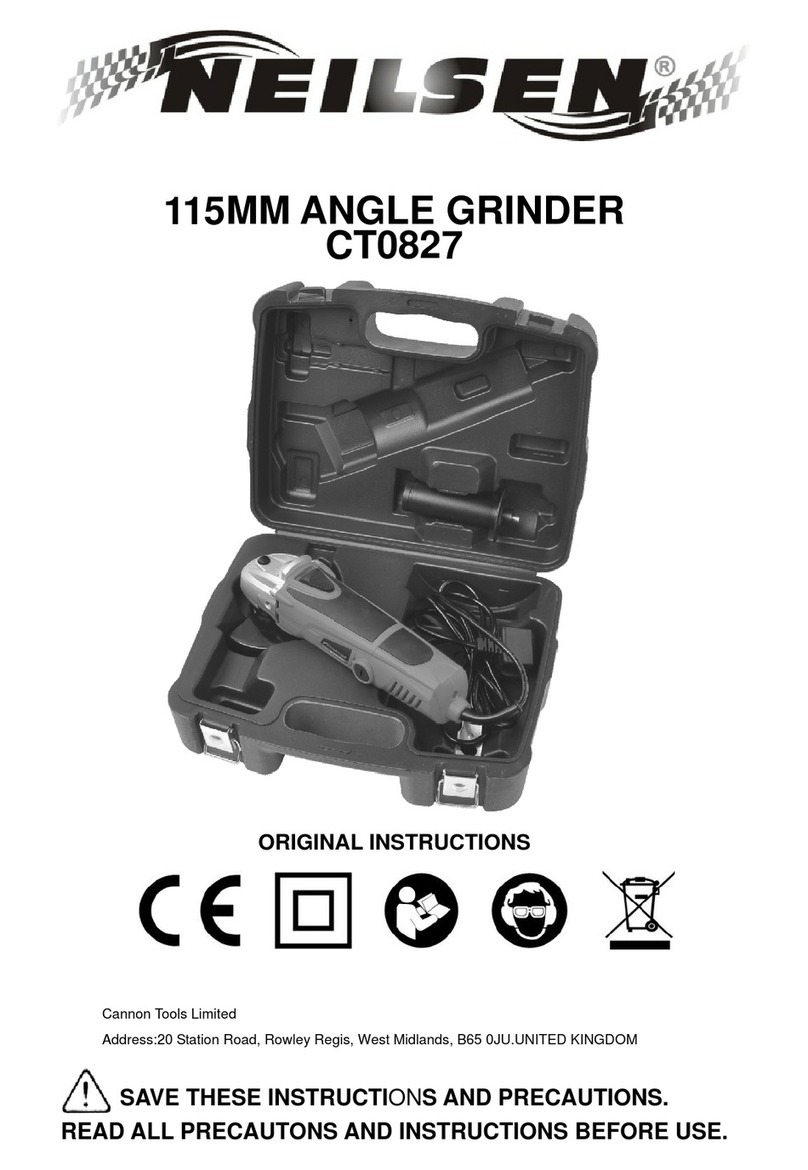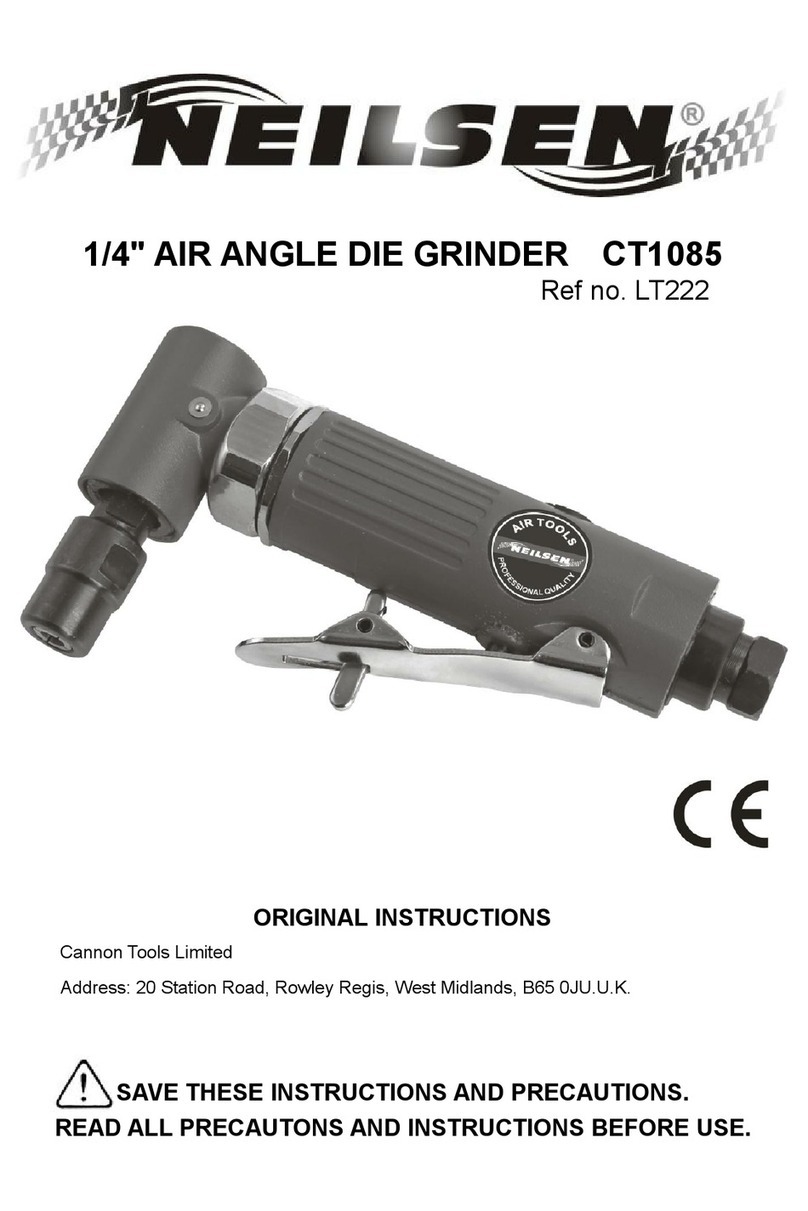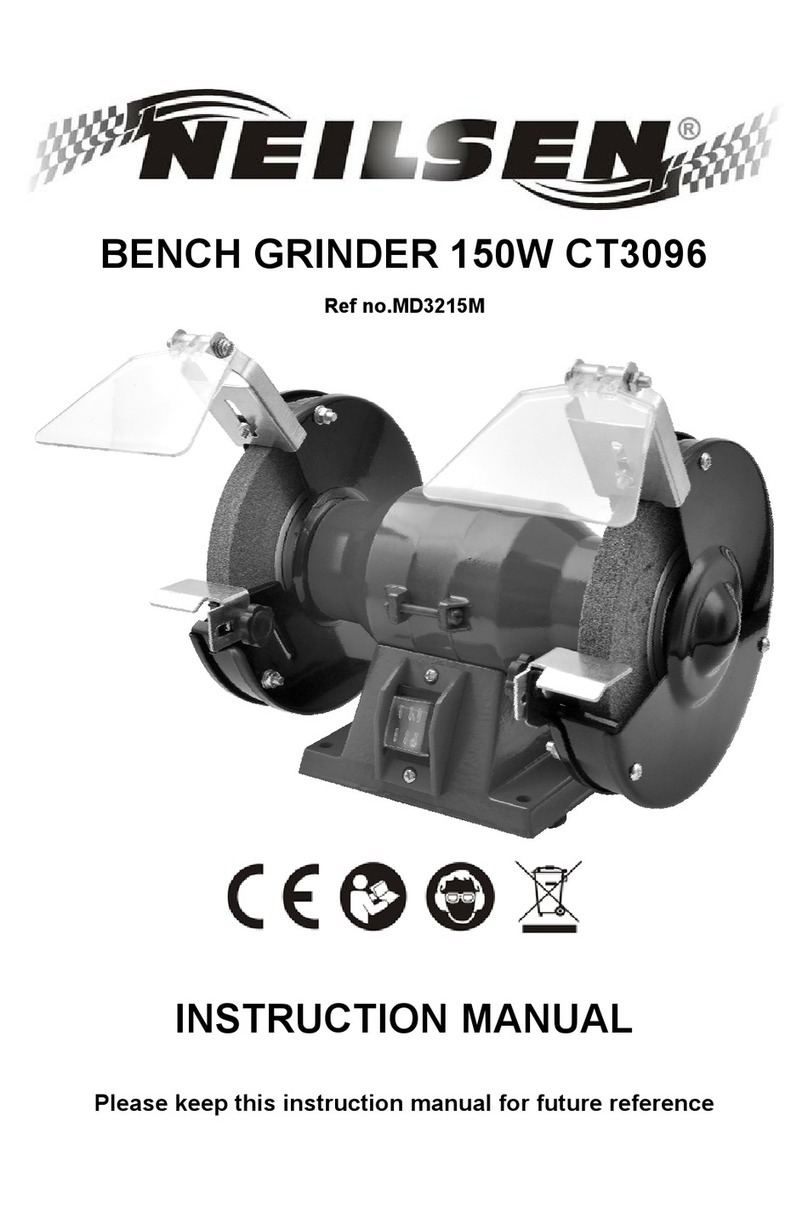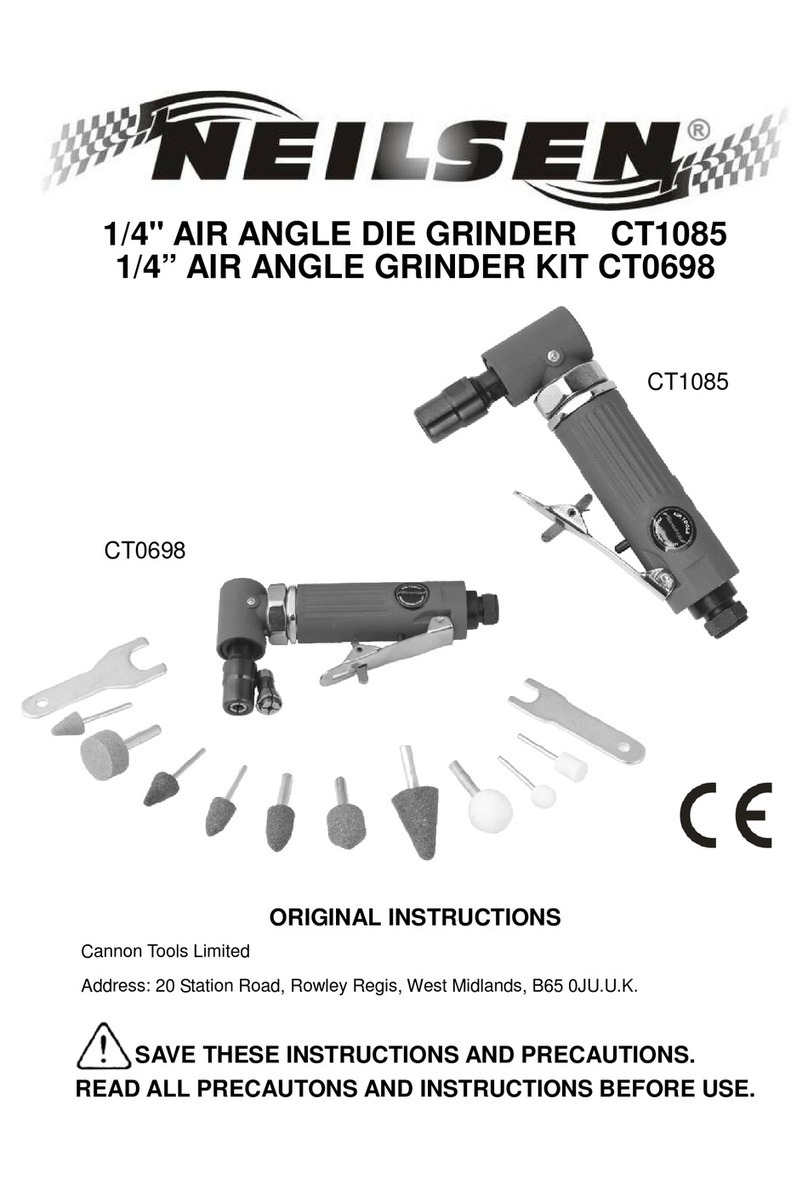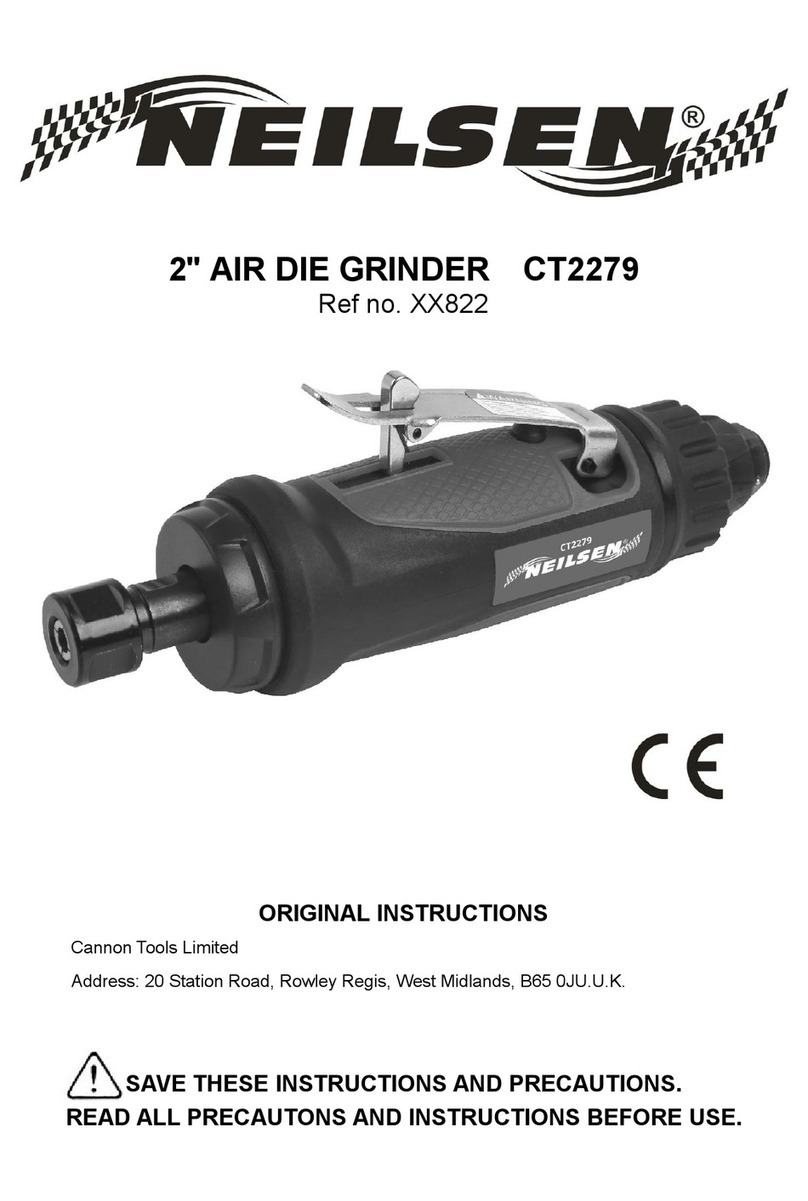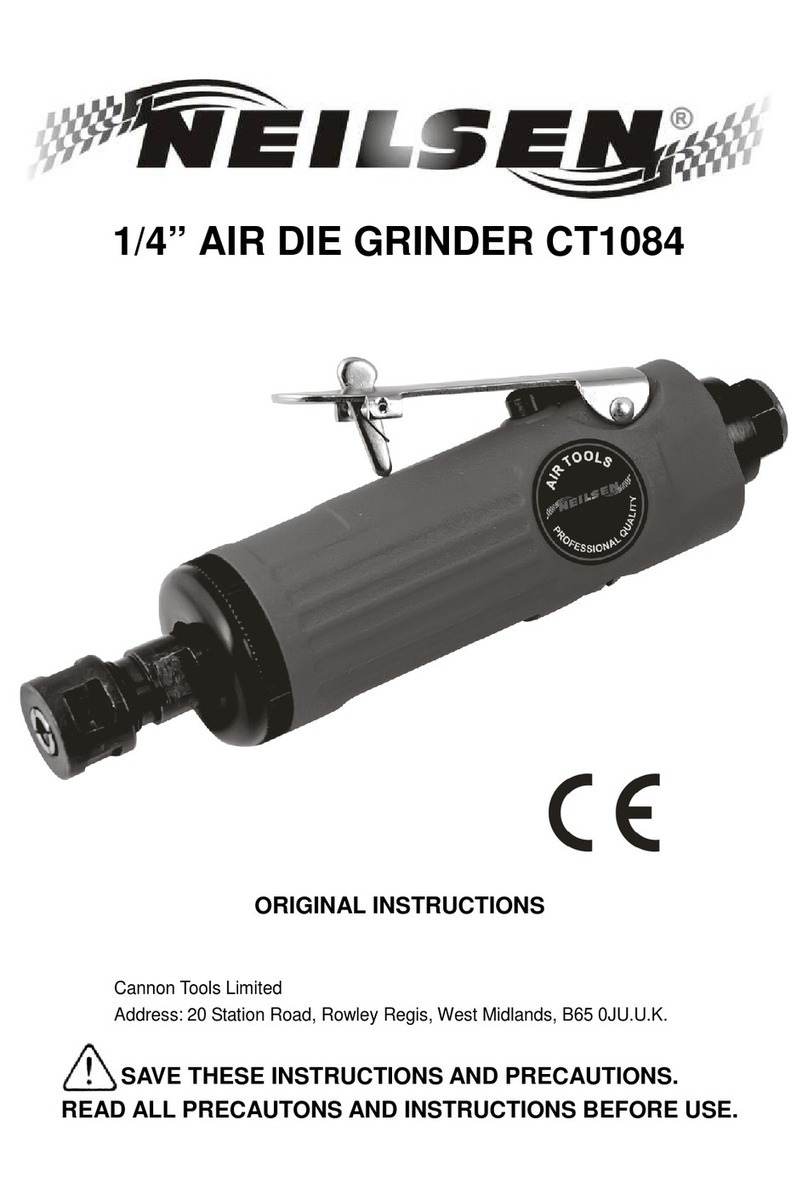
danger and personal injury.
c)
Do not use accessories which are not specifically designed and
recommended by the tool manufacturer. Just because the accessory can
be attached to your power tool, it does not assure safe operation.
d)
The rated speed of the accessory must be at least equal to the maximum
speed marked on the power tool. Accessories running faster than their
rated speed can break and fly apart.
e)
The outside diameter and the thickness of your accessory must be within
the capacity rating of your power tool. Incorrectly sized accessories
cannot be adequately guarded or controlled.
f)
Threaded mounting of accessories must match the grinder spindle thread.
For accessories mounted by flanges, the arbour hole of the accessory
must fit the locating diameter of the flange. Accessories that do not match
the mounting hardware of the power tool will run out of balance, vibrate
excessively and may cause loss of control.
g)
Do not use a damaged accessory. Before each use inspect the accessory
such as abrasive wheels for chips and cracks, backing pad for cracks, tear
or excess wear, wire brush for loose or cracked wires. If power tool or
accessory is dropped, inspect for damage or install an undamaged
accessory. After inspecting and installing an accessory, position yourself
and bystanders away from the plane of the rotating accessory and run the
power tool at maximum no-load speed for one minute. Damaged
accessories will normally break apart during this test time.
h)
Wear personal protective equipment. Depending on application, use face
shield, safety goggles or safety glasses. As appropriate, wear dust mask,
hearing protectors, gloves and workshop apron capable of stopping small
abrasive or workpiece fragments. The eye protection must be capable of
stopping flying debris generated by various operations. The dust mask or
respirator must be capable of filtrating particles generated by your
operation. Prolonged exposure to high intensity noise may cause hearing
loss.
i)
Keep bystanders a safe distance awayfrom work area. Anyone entering
the work area must wear personal protective equipment. Fragments of
workpiece or of a broken accessory may fly away and cause injury beyond
immediate area of operation.
5






